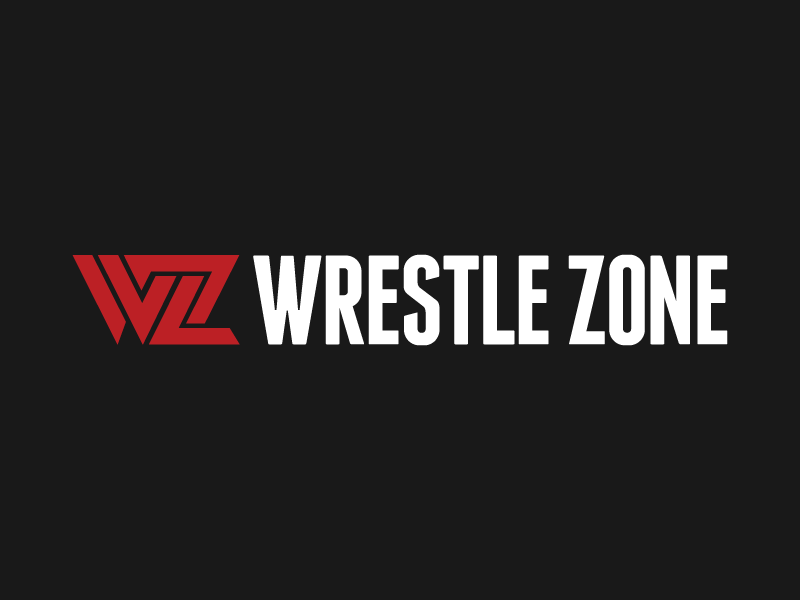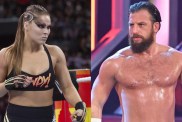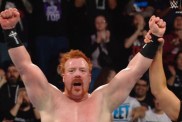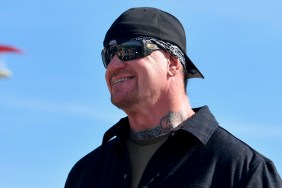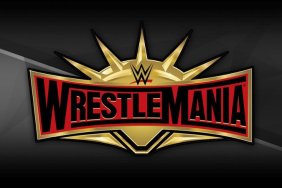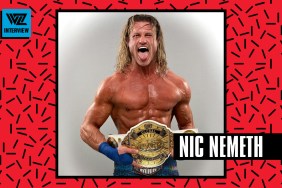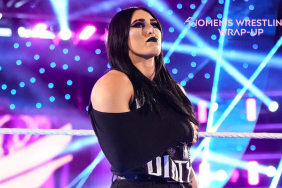It is a widely shared opinion that the period between 1997 and 2001, the appropriately named ‘Attitude Era’ in WWE, was the most exciting time in history for any fan of professional wrestling. The bitter war between the World Wrestling Federation and World Championship Wrestling forced both companies to raise the bar to previously uncharted heights in order to gain any available edge over their bitter opponents. The result was that professional wrestling gained a mainstream popularity in the US the likes of which it had never experienced before. Edgy characters such as ‘Stone Cold’ Steve Austin, The Rock, Degeneration-X, a revamped, darker Sting, the NWO, ‘Sexual Chocolate’ Mark Henry and many others made wrestling “cool” amongst the teenage demographic, and even many adults. Extreme Championship Wrestling also played a part in shaping this boom period in professional wrestling. Firstly, their more risqué approach to their product would popularise an edgier, more violent style of wrestling that was taken and, to quote Vince McMahon, “reshaped in (their) own form” by WWE and WCW during their bitter war. They would also be the company in which future superstars such as Steve Austin, Chris Benoit, Eddie Guerrero, Chris Jericho, The Dudley Boys and many others first made significant marks on the North American wrestling business. With WWF and WCW striving relentlessly to best satisfy and already massive fan base, and ECW acting as somewhat of a breeding ground for both wrestlers and wrestling concepts for the two big promotions, this truly was the golden age of professional wrestling.
But then, in the space of a month, both WCW and ECW were no more. A financially crippled WCW was bought out by Vince McMahon and WWE. ECW was forced to fold due to their inability to find a network willing to air their weekly shows, along with the grave financial problems that already existed in the company. In the time it takes for your front lawn to go from well mown to disappointingly shabby yet still acceptable; the wrestling business had altered drastically. WWE was now the only company offering full time contracts, and the competition for these contracts was fierce. With this vast array of talent to build his company with, many expected Vince McMahon would take WWE to even greater heights than had been experienced during the promotion wars. Yet, as we approach the fourth anniversary of the day WCW became a property of one Vincent Kennedy McMahon, the general consensus amongst wrestling fans is that wrestling just isn’t as good as it used to be. HHH is only champion because he’s married to Stephanie, JBL is a bad wrestler, Jericho should be main-eventing, they should give the cruiserweight division proper attention, Diva’s and other non-wrestling related trash TV take up too much time. These are some of the more common topics of discussion amongst the Internet Wrestling Community. Many look at WWE’s direction and fail to believe how they have gone from having such an engaging, exciting product to having one that millions of people have switched away from since the turn of the new century. I would dare say that many avid fans of WWE who are reading this genuinely believe that if they were in charge of the on-screen aspect of WWE, they could do a better job.
Think about it. Do you think you could do a better job at writing RAW and Smackdown every week and putting on exciting Pay-Per Views once a month? Do you?
Did you nod at the screen? I’ll bet a few of you did. Why? Simply due to the fact that, in my ever so respectful and humble opinion, there are a lot of people who actually could do a better job at putting together the WWE weekly TV shows and monthly Pay-Per-Views. A bold statement, I’m sure you’d agree. So, am I saying that Vince McMahon has lost his creative muse? Have his ideas run out? Is World Wrestling Entertainment, the biggest wrestling company in the history of the business, on a slippery slope leading to their ultimate downfall? I’m glad to say I don’t think so, loyal readers. On the contrary, I believe that the years between 2002 and 2005/2006 will be looked upon as transitional period in WWE, a time when Vince McMahon took a step back, surveyed his options and decided to reset the foundations of WWE.
So your first question is obviously fairly simple. Why? Why would Vince McMahon want to take a phenomenally successful company and deliberately tone down its content, knowing his company would lose viewers and money in the process?
Why?
There a number of reasons. Firstly, the reality TV fad that has swept the western world has been detrimental to all other forms of television shows. The idea of seeing people on television without a script to follow has mysteriously captivated millions of viewers, who voluntarily watch such shows as Big Brother, Survivor, Temptation Island and many others fanatically. With a plethora of new, popular shows to choose from, the battle for ratings became fiercer for WWE, who didn’t have the “real” aspect to their shows that was now the new craze. Secondly, in April of 2001, unemployment figures in the USA rose by the biggest percentage in over a decade. With the US experiencing somewhat of a recession, people were less likely to be able to afford Pay-Per-Views, event tickets, merchandise, and all the other things that WWE makes its money through. Perhaps the midst of a recession would be a good time to rebuild one’s company, knowing that they have such a great monopoly over the business that they will face no threat from other promotions? Finally, something rather massive happened in the latter to mid-part of 2001. On September 11th, 2001, the United States suffered a horrible attack on New York. How did this effect WWE? 9/11 has been called ‘The Day that America lost its Innocence’, by many people. On that fateful day, everything became less important. Wrestling and entertainment became less important, and rightfully so. Edgy television and violent television served no longer as an escape from the worries of every day life, but rather as a reminder of it. The world had changed.
So with the ongoing war in Iraq, a recession taking place in WWE’s primary market, the reality TV craze sweeping the nation and a lack of competition which would drive WWE to work as hard as they could to produce great shows, there is ample evidence to support the theory that Vince McMahon decided to revamp WWE, knowing he would lose viewers in the process. Fans expected to see Goldberg, the NWO, Sting and all the other icons of WCW come to WWE to engage in a scripted promotional war. Sadly, this was financially unfeasible for WWE as these wrestlers either had contracts with Time Warner that ensured them massive pay for not doing anything, or else did not wish to go to WWE for personal reasons. The Invasion was destined to be a let-down, and so it proved to most. So why not just rebuild if there is nowhere further to go? Pretend the wrestling business is a balloon for just a moment. The era of the Monday Night Wars was when the balloon expanded to a massive size; eventually it was going to pop. It’s an obvious analogy, but it’s to the point. So rather than keeping huffing and puffing into a potentially explosive balloon, trying to get it as big as you could to impress people until there was no more room for expansion, no way to impress the fans more. Why not just let it deflate slowly so it can re-expand to the same glory another day, and impress a whole new audience of people with a new product? What good is a burst balloon?
The most obvious indication that WWE decided to rebuild from 2002 onwards comes in the form of brand extension. Many people would say that WWE hit their peak at Wrestlemania X-7, for my money the greatest WWE show of all time. The rest of 2001 was spent primarily on the Invasion. After Wrestlemania X-8, WWE announced its plans for brand extension, a widely criticised concept which saw WWE’s roster divided into two groups, one which would compete on RAW, the other competing on Smackdown. This immediately diluted the talent pool, the idea being that there would be more room for young talent to make a breakthrough and prove themselves worthy of being major players in WWE. This was a move that was guaranteed to be unpopular and lose fans. However, without brand extension, what would WWE’s landscape look like today? Would there have been room for John Cena, Randy Orton, Batista, Shelton Benjamin, Orlando Jordan and others to come to the forefront in WWE without brand extension? Look at those five names. Is there anything striking about them? Only that there is quite a fair chance that when Wrestlemania 21 is done and dusted, 4 of those men will hold the top 4 singles titles in WWE… and the other one will have ended the greatest streak in the history of pro-wrestling, Undertaker’s 12-0 record at Wrestlemania. Far from guaranteed, but wholly possible you will agree. Not bad going is it? One of the key reasons WCW went bankrupt is that the setup in the company did not allow for the younger guys the chance to take a top spot in place of one of the veterans. With brand extension, WWE has nixed that potential problem, and has created a new era of wrestlers.
There are plenty more indications that WWE has deliberately engaged in a rebuilding process since 2002. The violent, “hardcore” aspect of wrestling that had played a large part in its growth in popularity was gradually toned down, to the extent that it is very rare these days. It has been 2 years and 4 months since the TLC match, arguably the peak of WWE’s high-risk match inventions, has graced a WWE stage. The bar has been lowered again in terms of dangerous stunts; many dangerous moves have been banned in WWE for safety reasons. Shocking plot twists seem to be rarer and storyline development slower. Title matches and changes are much less frequent. The edgy, believable characters of the late 90’s that mesmerized people are being replaced with less engaging, often unbelievable ones. Heidenriech, Gene Snitsky, Mordecai, La Resistance and Simon Dean are a few current examples. Everything seems that little bit less in your face than in the late 90’s. Just look at the entrance music of the current roster. Generic doesn’t begin to describe them. The feeling that something completely unexpected could happen and drastically alter the show halfway through seems nearly impossible.
A set of rules is being put in place. Boundaries have been set that no superstar, be they HHH, John Cena, or any other wrestler, are allowed to cross. Ric Flair was fined heavily for telling Randy Orton he was going to make him bleed like Flair has done to so many virgins, the taboo topics are being kept that, taboo.
Consider the title of my column for a moment, ‘Setting the Table’. Now pretend that the attitude era was a great feast of wrestling. The feast was long, sublime and utterly satisfying. Everyone gorged themselves to their hearts content. However, eventually every feast must come to an end. If you were to try and force anymore from the feast beyond what it was intended to give, you would ultimately eat too much, get terrible pains in your stomach, suffer massive indigestion and be forced to go to hospital for a week while you are nursed back to a health. Something that would likely put you off having such a feast again anytime soon due to the stigma attached from your previous bad experience. Much the same, had Vince McMahon and WWE tried to force anything more from the wrestling boom, it would ultimately have met a similar fate. The feast of wrestling would have ultimately become an impossible one to keep alive. It had to end.
So WWE cleared their feast away, the fans drifted away gradually rather drastically. A very sizeable fan base still remains, awaiting their next feast. Others, who may have lost interest or are simply fans waiting to be discovered, will flock to the next feast when word of it gets out.
The Attitude Era was so successful for a reason. It was the time in pro-wrestling where all the unspoken rules that had existed in wrestling were broken. DX, The NWO and Stone Cold Steve Austin in particular broke down barriers that had long been held sturdily in place. The McMahon-Austin feud allowed millions to watch a hero rebel against authority, something everybody could relate to. Children could relate it to their school discipline figures, adults to their relationship with their boss. The characters were more real, the fights more brutal, the backstage segments darker. Since 2002, that has undeniably been reduced. Sure, we still see some of the previous “attitude” coming out now and then, but not all that often.
So, what is this master plan that WWE has then, I hear you ask? What formula have WWE put in place to prepare for the next feast, how well have they set their table?
Let me take you back to brand extension. When Vince McMahon decided to dilute his talent pool in order to give younger stars the forum to get over in WWE and become household names, he did something else as well. He created a split, a separation of the talent, a rivalry. Over the last couple of years, WWE has done a very good of establishing that split as something firm, one which cannot be brushed aside nonchalantly. Both the RAW and Smackdown announcers subtly pimp their respective shows as being the stronger of the two. Trades appear to be only possible through a draft declared by Vince McMahon, or in the case of the Royal Rumble winner. As great as the Monday Night Wars was, there was one thing it was never able to give, well scripted conflict and all out war between the two promotions. People wanted to see the war between WCW and WWE. They got it to an extent with the Invasion but, with that being scripted by WWE, the outcome was inevitable. By establishing Smackdown and RAW as two separate entities, WWE have laid the foundation for an inter-promotional war the likes of which have never been seen. It may not have the magnitude of WWE vs. WCW, but it has the advantage that both RAW and Smackdown are WWE creations, and they will not be looking to make one appear stronger than the other, as was the case with the Invasion. Inter-promotional conflict is very popular with the fans; it gives them something fresh and exciting. Look at the reactions of the fans when Kurt Angle showed up on RAW, or when HBK showed up for revenge on Smackdown. During the Royal Rumble match when the eight guys in the ring divided into two groups of four, each representing one show each, and squared off the fans went nuts. Inter-promotional matches are one of the biggest attractions at Wrestlemania. People want to see the two brands clash. They are teasing us with it very gradually and I believe, when the time is right, they will unleash a RAW vs. Smackdown war that will be the next feast of professional wrestling.
Once war has been declared, rules that previously existed will be cast aside. The rules that WWE have laid with their less aggressive product can be shattered all over again, the balloon can re-expand to its former glory. With a time of war, things will become more violent, it’s a part of nature, though a sad one admittedly. But for those who want to see WWE at its best, the feast of wrestling will be back on, and everyone is invited.
Am I crazy? Hopelessly delusional and in denial that WWE have lost it? Perhaps, but I think it would be extraordinarily naïve to discount the brilliant wrestling mind of Vince McMahon. The man who, to the bewilderment of many in his own company, allowed ECW, a rival promotion, to have time on RAW in the mid-90’s to promote their product. Why did he do that?
Why?
Simply put, because he saw potential in the hardcore approach that ECW was bringing and wanted to see how it would sit with the WWF viewers of the time. When he saw it was popular, he took it and used aspects of it to create the most successful period in the history of the business.
I have faith that he knows what he’s doing.
Any feedback to the pepsiplunge@yahoo.co.uk , I will endeavour to answer every one.
Thanks,
Shak
